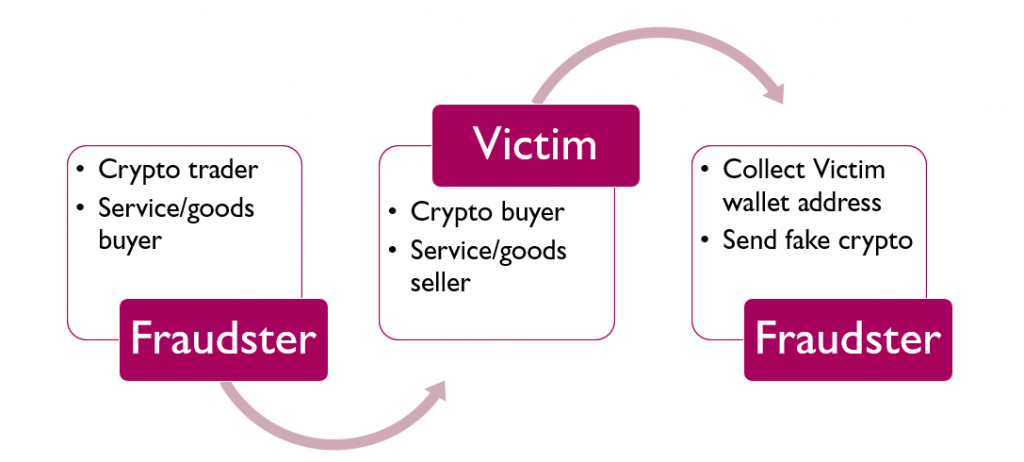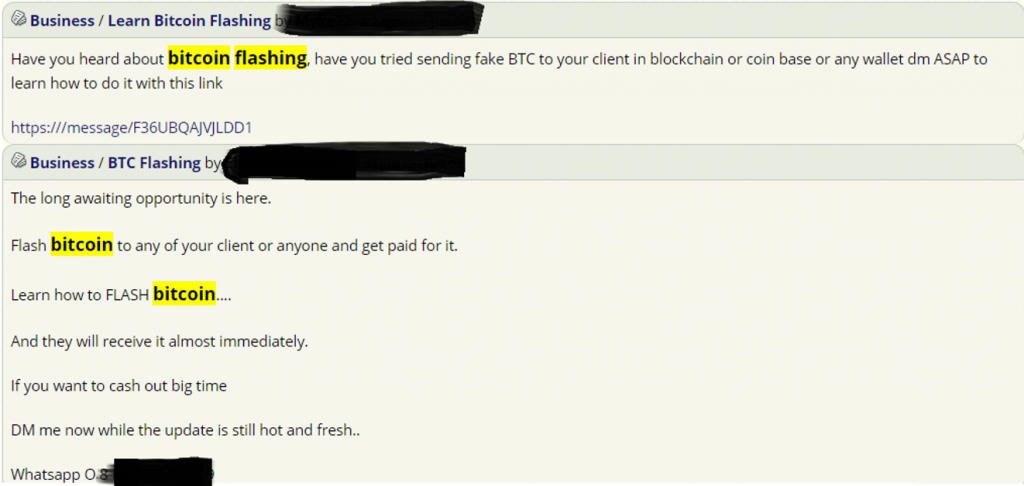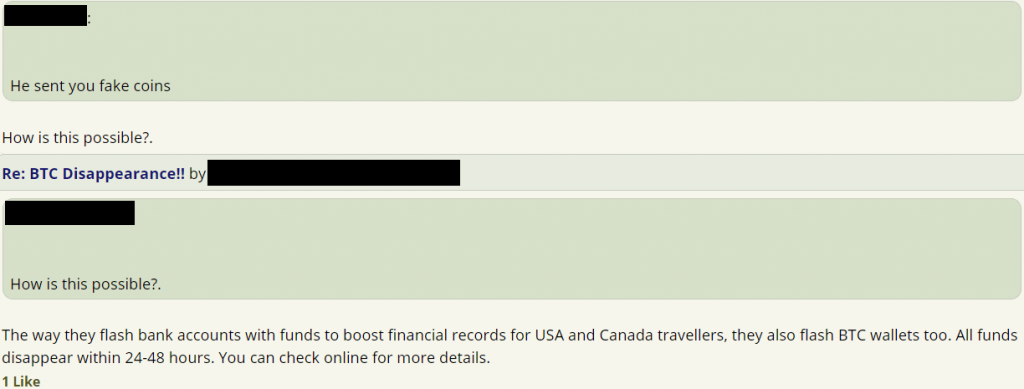Bitcoin-Flashing As a Service (BFaaS)

Nigeria is ranked third most traded cryptocurrency country after the US and Russia. This is due to many factors such as currency sustenance, unemployment, high profit etc. This has increased the threat landscape as cyber fraudsters have shifted ground from traditional schemes to cryptocurrency scam. With close monitoring and intelligence on a popular Nigeria forum and closed groups, CyberPlural brings these findings for the crypto community’s awareness and safety.
One of the scamming technique that is gaining popularity is Bitcoin Flashing. It is popularly called Bitcoin Flashing but the same technique can be used on other cryptocurrencies especially the popular currencies such as Ethereum, Tron, and Litecoin amongst others.
People really started talking about Bitcoin Flashing on Nigerian forums in 2020 and this can be attributed to the increase in the usage of cryptocurrency as well as the COVID lockdown restrictions.
In simple terms, Bitcoin Flashing enables a fraudster to send cryptocurrency to his victim and then the transaction is reversed after a period of time therefore leaving the victim without his payment. Quite similar to the “fake bank credit alert” that we are well aware of.

This can happen in several forms. One example of how this can happen is explained in the following steps:
- Look for a legit bitcoin vendor that buys bitcoin.
- Tell him you want to sell BTC. He gives you his wallet address.
- Put his BTC wallet address in the software (flasher), put amount and click on “Create a new transaction”.
- He will receive the BTC immediately.
- BTC won’t be confirmed and will be in his wallet for 14 days afterwards it disappears.
This process is relatively easy due to the presence of some Bitcoin Flashing software. All the scammers need to do is to specify the Victim’s wallet address, and the agreed amount; and the flashing software sends the fake cryptocurrency that will be reversed after some time elapses.
What is more interesting about this is the fact that we now have what we at CyberPlural like to call “Bitcoin Flashing as a Service”. There are some people in the scamming community who help fraudsters flash their victims at a price. The fraudsters contact these service providers and provide their victim’s wallet address with the amount of cryptocurrency to send. With the advent of this service, the frontline fraudsters do not necessarily need to have the flashing software to perform Bitcoin Flashing, they just get it as a service on-demand.

We see people putting out public adverts to teach Bitcoin Flashing.

User awareness is very important in this regard because some users might not be aware that they have fallen victim to a scam. Some victims might blame their wallet providers while others might blame the cryptosystem for the disappearance of their cryptocurrency not knowing that it is actually a scam. An example of this is a user making a complaint about his cryptocurrency missing after two days and he is blaming it on his wallet.


We saw an instance where a user claimed to have lost as much as $3,000. This is to serve as a testimonial and to show how far this scamming technique has gone.

We got a professional view on the Bitcoin Flashing trend from the CTO of a crypto-trading platform Bekonta in the person of Japhet Johnson. Japhet agreed with what we have written earlier and added that this attack technique mainly targets Bitcoin users and his company has taken proactive steps and is still coming up with new defence mechanisms to tackle this trend with the aim of making sure that all transactions are confirmed to be true and accurate. There are several other attacks he enlightened us on and many of them are centred on Denial of Service, and insider threats performing malicious activities.
It is worrisome because individuals who trade independently via P2P are more likely to fall victim, because they do not have the protection that these trading platforms are implementing for their users hence the need for more user awareness.
How to stay safe (Recommendations)
- Buy from authorized dealers.
- Verify transaction on the blockchain explorer.
- Use escrow if possible when transacting in cryptocurrency.
- Perform your due diligence when participating in P2P transactions.
Our Cyber Threat Intelligence Team will continue to take a deeper look into the “Bitcoin Flashing As a Service” scheme to further reveal the technicalities behind its Mode of Operations (MOs). See you in our next episode of this series.

One Comment
Awesome post here. Well done to the entire team.
Every attack on the cryptocurrency network and activities have opened up a lot to how cybersecurity cannot be overemphasized.
Everyone needs to be aware of the challenges of going into this industry before the mass adoption comes in.
At the end of it all the attacks will help us work on our defense more efficiently.